13 Extraordinary Illustrations of Fireworks Displays From Days of Yore

This hand-colored etching illustrates a 1749 show celebrating the Aix la Chapelle peace treaty, which also featured the first performance of George Fredric Handel’s “Music for the Royal Fireworks.” Sadly, three spectators were killed during the show when a lit rocket shot into a stack of reserve fireworks and blew up a pavilion. (Image: Public Domain/WikiCommons)
Vivid, startling, kinetic—fireworks shows are an art form unto themselves. In the earlier, quieter days of civilization, the noise and spectacle of a fireworks show was almost beyond comprehension. Viewers compared them to “the heavens falling to the earth, or the fires of hell.”
Still, for centuries painters, printmakers and engravers have tried to shrink these explosive pageants into two dimensions. Artists used lots of tricks to get the right feeling across, from exaggerated brushstrokes and imaginative coloring to optical illusions and translucent paper.
Historically, fireworks displays were financed by royalty in honor of their own coronations, the signing of peace treaties, and similarly stately occasions. The illustrations that were published afterward served as mementos of the celebration. They ended up in museums, historical encyclopedias, and on the walls of peoples’ homes—little slices of the apocalypse, seared into the collective consciousness.
Below are 12 illustrations of spectacular fireworks displays that appeared between 1628 and 1883.
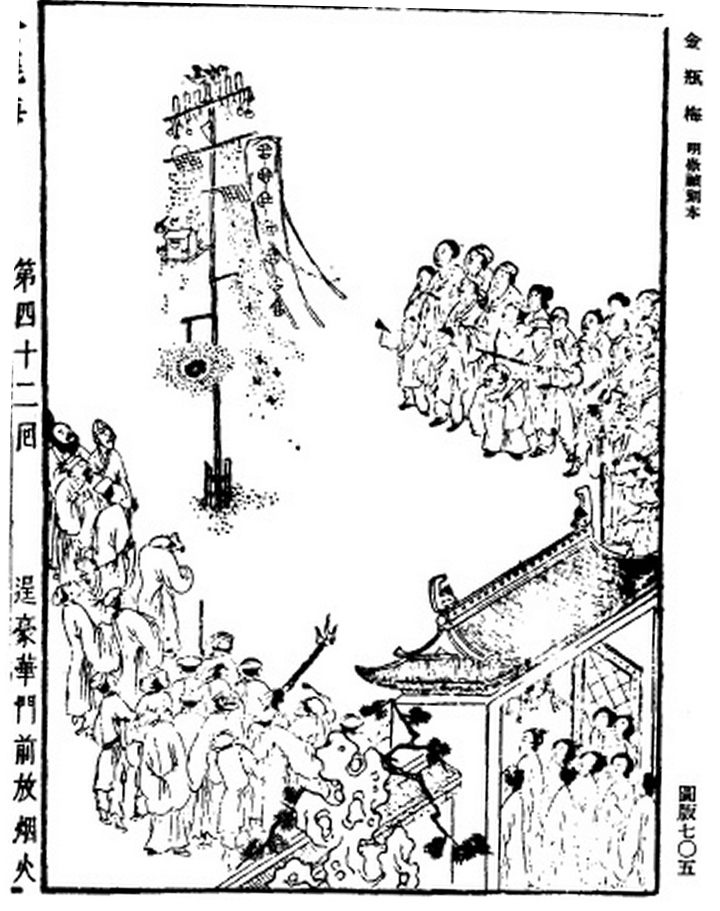 An illustration from the 1628-1643 edition of the popular Chinese novel Jin Ping Mei, entitled “A Powerful Family Blocks Its Gate In Order To Enjoy Fireworks.” (Image: Public Domain/WikiCommons)
An illustration from the 1628-1643 edition of the popular Chinese novel Jin Ping Mei, entitled “A Powerful Family Blocks Its Gate In Order To Enjoy Fireworks.” (Image: Public Domain/WikiCommons)

Fireworks displays to celebrate the end of the Thirty Years War in Germany, in 1650. Engraved by Peter Troschel and based on a drawing by Michael Herr, who became famous for his illustrations of soldiers during the war. (Image: GRI Digital Collections/Open Content Program)

A print from Dresden, Germany in 1678, commissioned by Mayor Gabriel Tzschimmer in honor of the Elector of Saxony Johann Georg II. “The scene shows the three Furies, associated with War, Hatred and Envy, issuing from the Mouth of Hell guarded by Cerberus and devils in pursuit of Hercules, who wins the fight and is showered with fireworks.” (Image: GRI Digital Collections/Open Content Program)

Fireworks over the River Thames, illustrated by an unknown printmaker in honor of the 1685 coronation of King James II. (Image: GRI Digital Collections/Open Content Program)

An energetic display in Brussels in 1686, after the liberation of Hungary from Turkish occupation. (Image: Public Domain/WikiCommons)
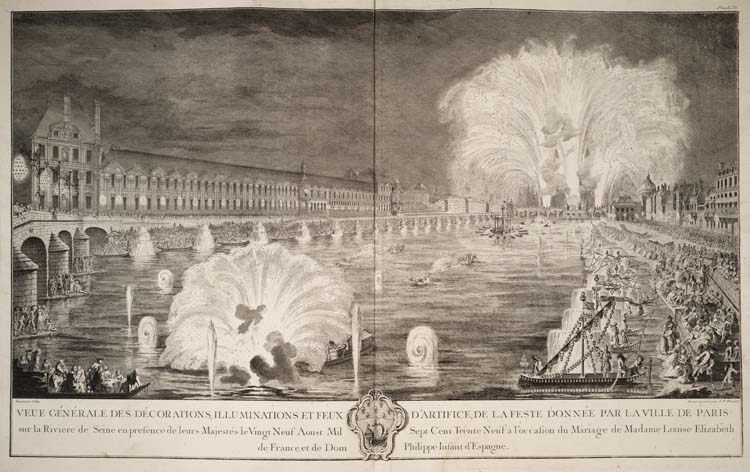
The City of Paris organized this display to celebrate the 1739 marriage of French princess Louise-Élisabeth to Philip, Infante of Spain and Duke of Parma. (Image: Toronto Public Library/flickr)

A “vue d’optique,” made sometime around 1776 in honor of Holy Roman Emperor Joseph II. When backlit and viewed through a special device, only the fireworks, printed on colorful translucent paper, are visible. (Image: GRI Digital Collections/Open Content Program)
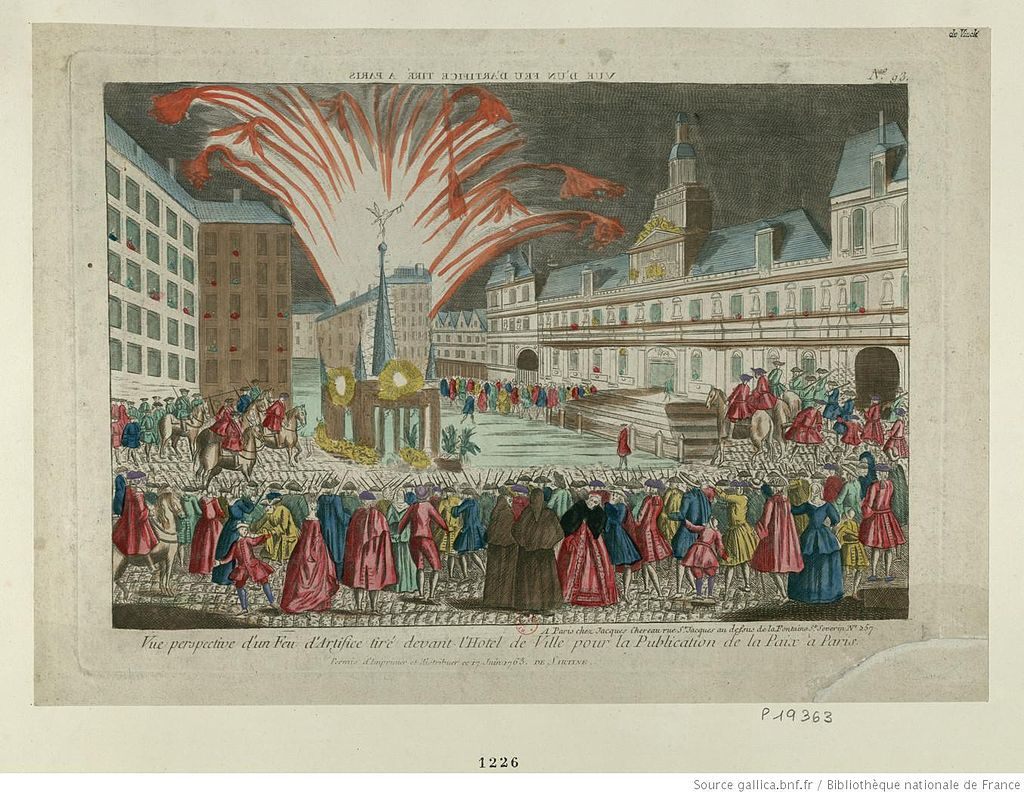
A “vue perspective,” or optical illusion print, made by Jacques Chereau to celebrate the 1783 Peace of Paris, which ended the American Revolution. (Image: Public Domain/WikiCommons)

King of Poland Stanislaw Poniatowski commissioned these fireworks to celebrate a 1787 meeting with Catherine the Great—but, unhappy with their meeting, she barely looked at them as she sailed away. The painting is by Jan Bogumil Plersch. (Image: Public Domain/WikiCommons)
 Designs for “pyrotechny,” engraved by Andrew Bell for the 1797 edition of the Encyclopedia Brittanica. (Image: Wellcome Library, London)
Designs for “pyrotechny,” engraved by Andrew Bell for the 1797 edition of the Encyclopedia Brittanica. (Image: Wellcome Library, London)
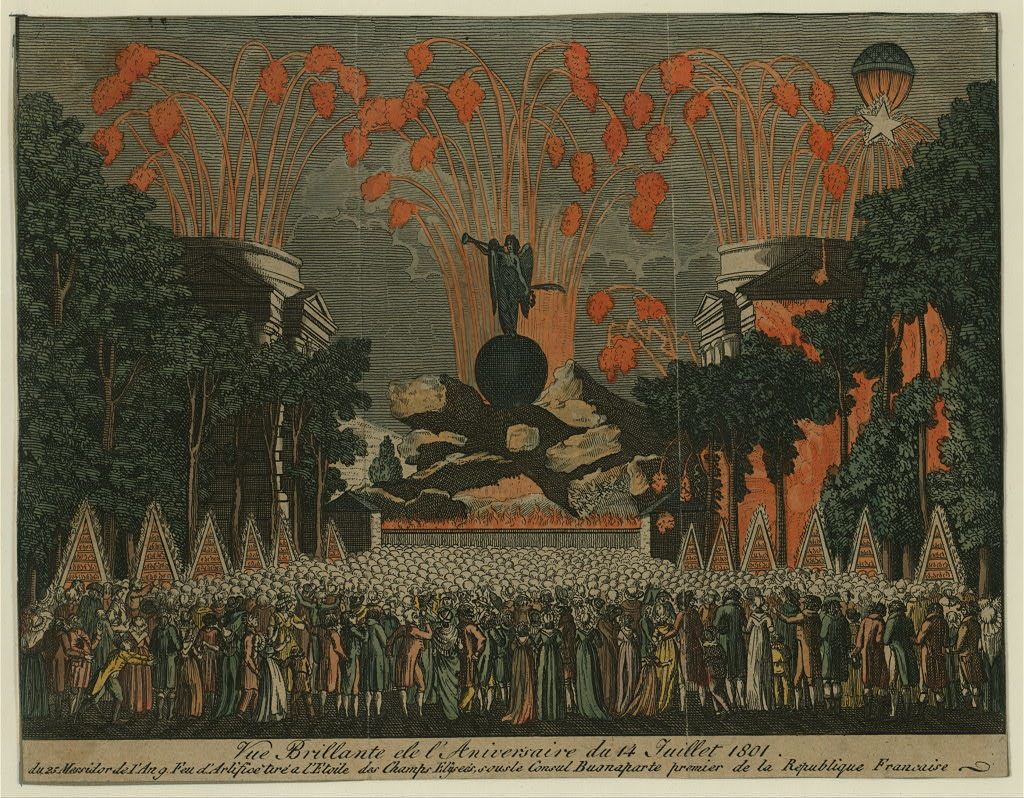
In this hand-colored etching, citizens of Paris watch fireworks on Bastille Day, 1801, as a balloon flies overhead. (Image: Library of Congress)
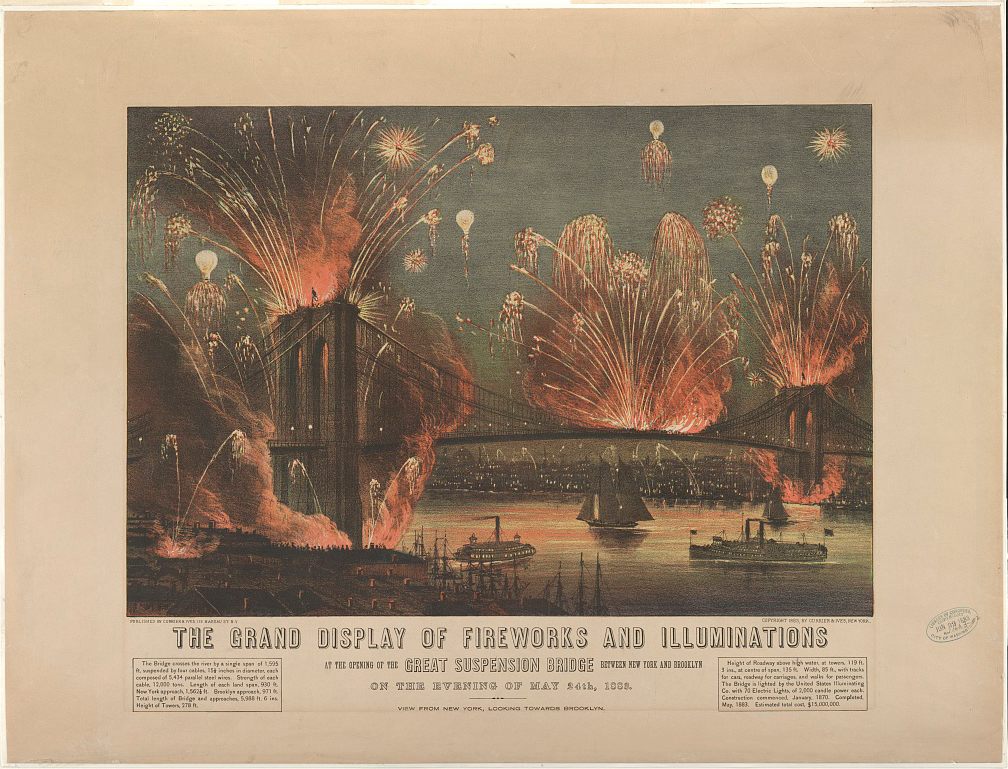
A”Grand Display” over New York’s Hudson River illuminated the opening of the Brooklyn Bridge on May 24th, 1883. This celebratory chromolithograph was published by Currier & Ives. (Image: Library of Congress)


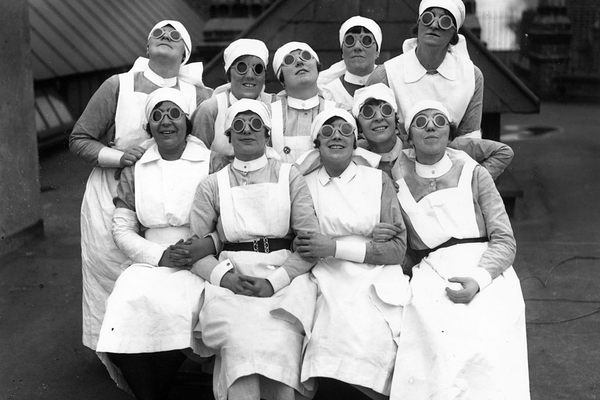
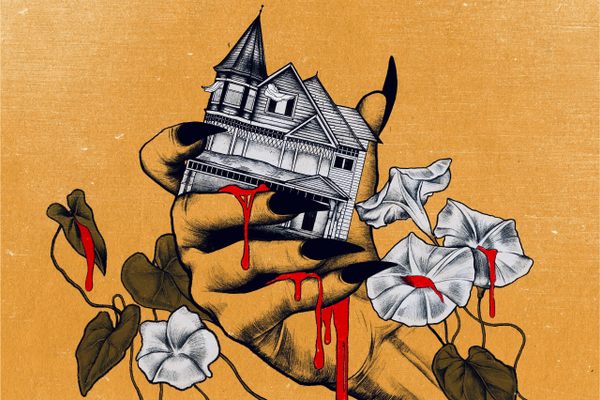



Follow us on Twitter to get the latest on the world's hidden wonders.
Like us on Facebook to get the latest on the world's hidden wonders.
Follow us on Twitter Like us on Facebook